Recent Articles
Popular Makes
Body Types
2018 Acura TLX Road Test and Review
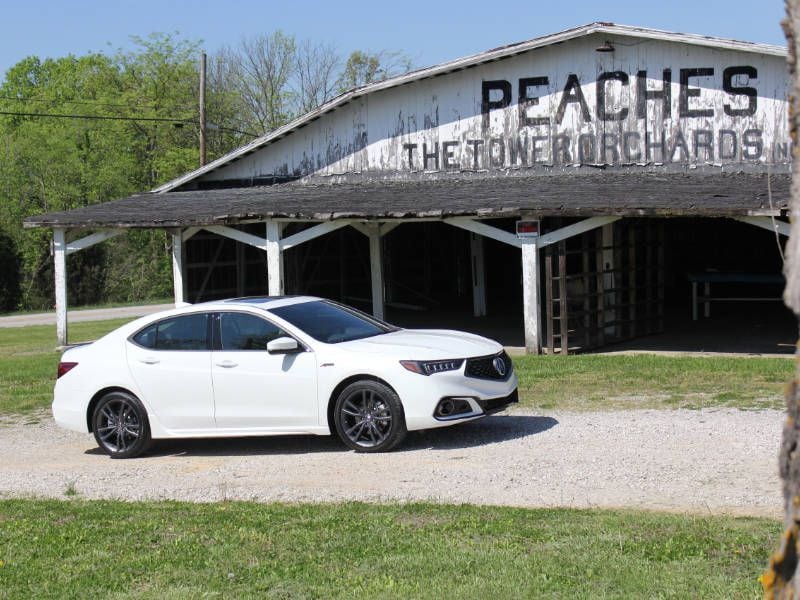
2018 Acura TLX Profile Peaches Stand ・ Photo by Miles Branman
Sometime around 2010, Acura wandered into the woods and lost its bearings. The Japanese luxury manufacturer made its best attempts to find a way out, from aggressive pricing to angular design and beefed-up interior comfort and convenience features, but premium car buyers gave up searching for the Acura they once knew.
Then, by some miracle, Acura stumbled on a narrow path to revitalization. Fueled by cash from its parent company, Honda, the premium marque brought back its NSX supercar, gave its MDX SUV a compelling makeover, and injected its marketing with soul. Now, Acura is turning its attention to the premium sedan market.
Crossovers and SUVs continue to top sales charts, but thanks in part to a reviving US economy, entry-level luxury sedans haven’t lost any ground. For years, Acura’s TL captured those graduating from mainstream four-doors. While the TLX has had a rougher go of it, Acura hopes that a new look, improved technology, and better packaging will lead the 2018 Acura TLX back home.
What’s New for 2018
The 2018 model year represents a mid-cycle refresh of the TLX sport sedan. Introduced in 2014, the TLX smoothed some of the late TL’s bodywork but came up short as a true premium offering in consumer’s minds. Most importantly, Acura hopes its new diamond-pentagon grille will help consumers forget about the last TLX’s odd front fascia. Also new this year is an updated infotainment system, more standard equipment, and the return of the A-Spec performance trim.
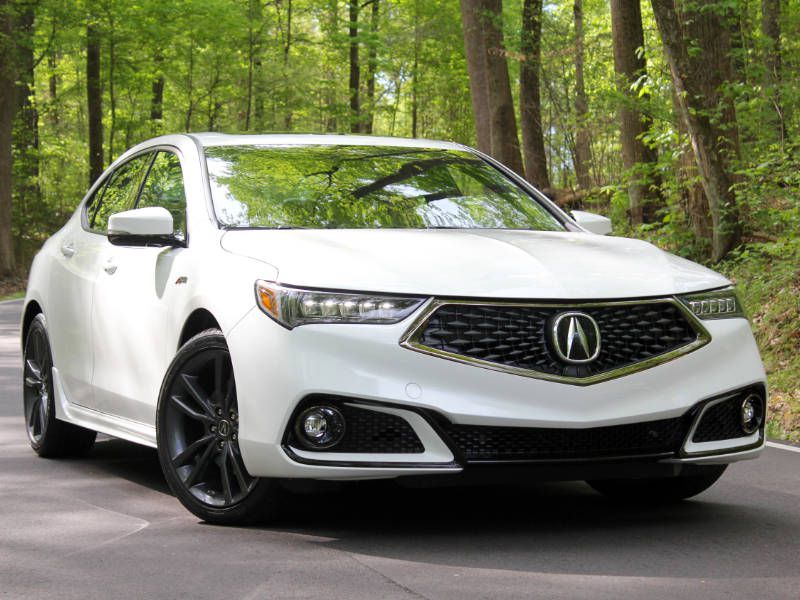
Photo by Miles Branman
Exterior Styling
Inspired by last year’s Precision Concept, Acura says every piece of sheet metal from the A-pillar forward is new. We could analyze each detail of the TLX’s updated face, but the biggest takeaway is that Acura’s beak-like grille is a quirk of the past. In its place, a diamond-pentagon form dominates the front end. Though the corporate countenance suits the bigger-bodied MDX better, it’s still a marked improvement here on the TLX. Other exterior highlights of the redesigned TLX include updated jewel-eye headlights, new 17-inch and 18-inch wheel designs, and chrome accents on Tech and Advance trims. The 2018 model also marks the return of Acura’s A-Spec performance variant. Not seen since 2008, the A-Spec represents aesthetic and mechanical improvements to establish its dynamic character. The A-Spec is identified by unique 19-inch wheels finished in dark gray, a matte-black coating for the grille and black chrome surround, a distinct front and rear fascia with black accents, a rear diffuser, 4-inch dual exhaust ports, and a black trunk lip spoiler. These modifications combine to give the TLX A-Spec a sporty look and aggressive stance.
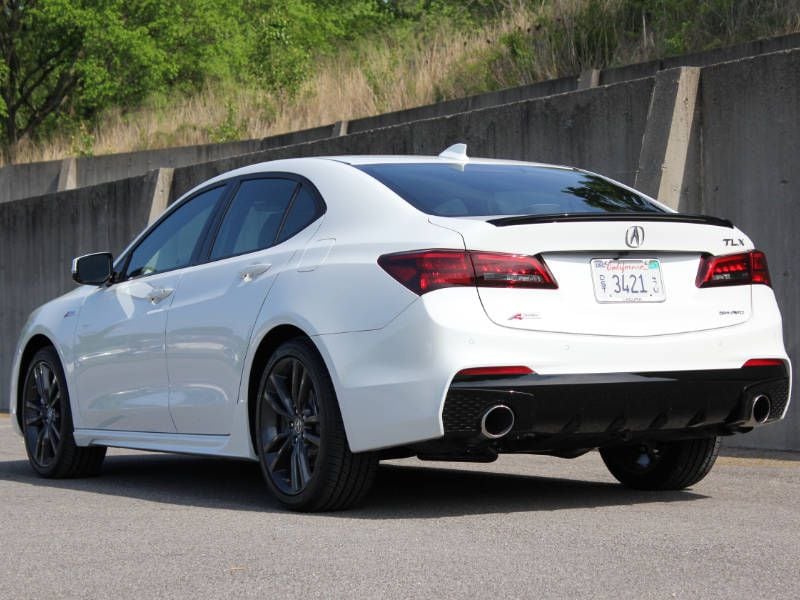
Photo by Miles Branman
Interior Comfort
Inside, the TLX appears much the same as last year but adds some technology and convenience features to keep the sedan competitive. Tech and Advance trim models receive a new premium seat design that is equal parts comfortable and supportive. Range-topping Advance models also receive a surround-view camera system, ambient lighting, heated rear seats, a heated steering wheel, built-in wireless phone charging, and power-folding side mirrors. The sportier A-Spec receives its own interior makeover. Standard are leather-trimmed sport seats with Alcantara inserts, a thicker steering wheel with sport grips, Alcantara door panels, white contrast stitching throughout, dark gray trim, and red lighting for the gauge cluster. Though the Advance trim has more features, the A-Spec is the perfect mix of convenience and flair.
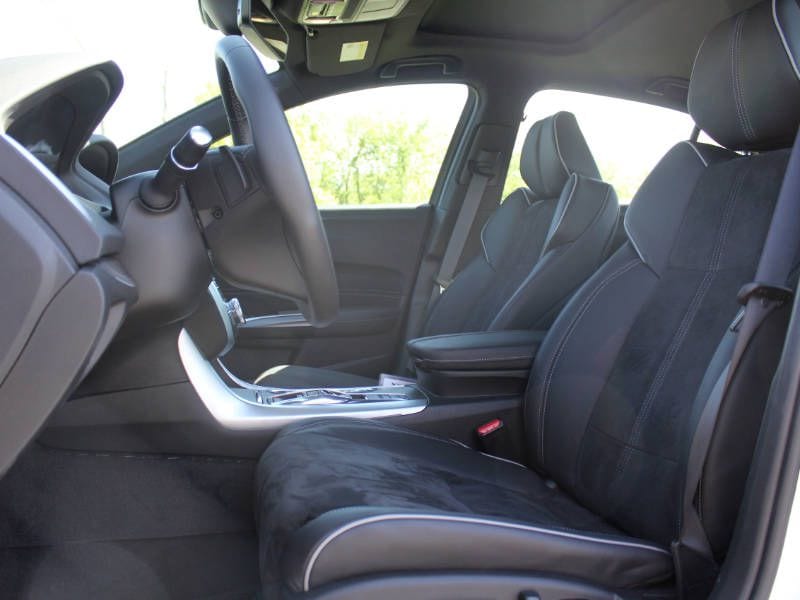
Photo by Miles Branman
Convenience and Safety Tech
The 2018 TLX introduces Acura’s second generation On Demand Multi-use Display (ODMD) with standard Apple Carplay and Android Auto. The infotainment system is 30-percent faster than the previous unit, and has a simplified menu structure. Despite these improvements, Acura’s module is still behind competitors like Audi, BMW, and Mercedes-Benz. Drivers don’t have it much better – a tiny TFT display wedged between analog gauges provides minimal value. The fact that Honda’s new Civic has smoother infotainment, a better driver's display and more USB ports is an unfortunate knock on the TLX’s otherwise refined cabin. Building on the TLX’s 5-star overall safety rating, Acura will include its AcuraWatch suite of safety technologies as standard on every 2018 model. The kit includes autonomous emergency braking, forward collision warning, adaptive cruise control, lane keeping assist, and road departure mitigation. This robust list of standard safety goodies can’t be matched by the TLX’s rivals, who charge hundreds or thousands of dollars for the same tech. Additional features like blind spot monitoring, rear cross-traffic alert, and parking sensors are available in tech and above trims.
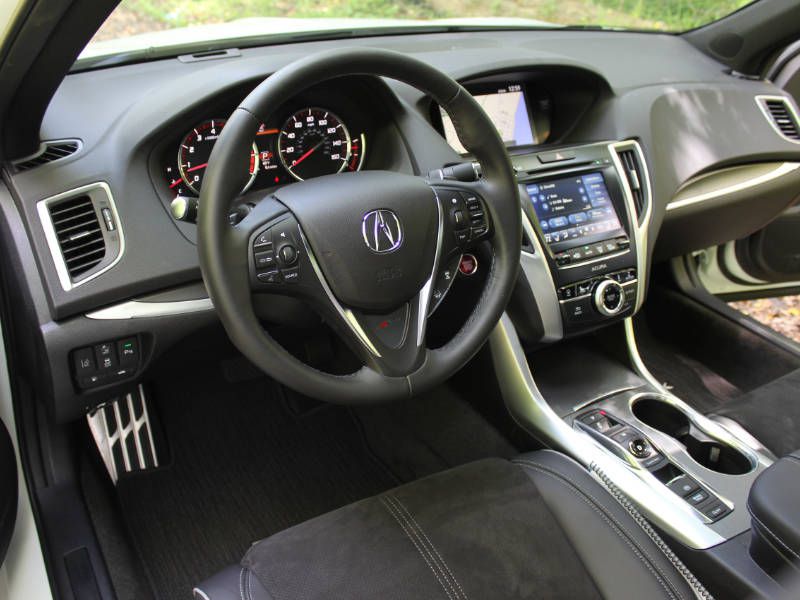
Photo by Miles Branman
Engine and Drivetrain
The 2018 Acura TLX employs the same 4- and 6-cylinder engines as last year, with no increases in output. Entry-level TLX models use a naturally aspirated 2.4-liter 4-cylinder to produce 206 hp and 185 lb-ft of torque. This engine is paired exclusively to an 8-speed dual clutch automatic transmission which sends power to the front wheels. Those who choose the 3.5-liter V6 and its 290 hp/267 lb-ft of torque gain a nine-speed automatic as standard and have the option of adding Acura’s SH-AWD (super handling all-wheel-drive) system. Every TLX features steering-wheel-mounted paddles for manual shifting. Though we didn’t get a chance to sample Acura’s 4-cylinder motor, we can’t imagine its power and torque is enough to make the TLX feel even remotely quick in a straight line. Unless you really need to save the cash, opt for the V6, which compares more favorably to segment rivals. Acura has yet to announce official fuel economy ratings for the 2018 model year, but expect the same figures as last year. 4-cylinder models should return 24 miles per gallon in the city, 35 on the highway, and 28 combined. Front-drive V6 versions will likely see 21-mpg city, 34 highway, and 25 combined. Cut about 3 mpg from the highway rating for all-wheel drive models.
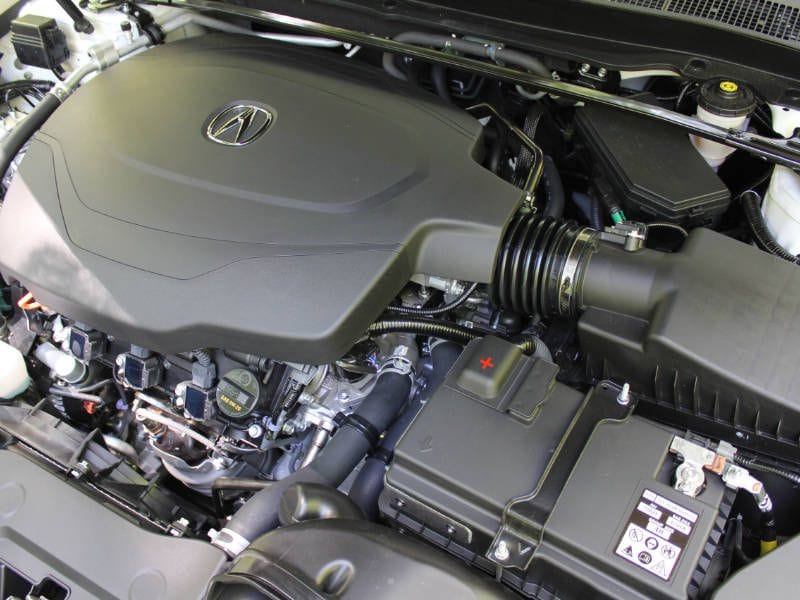
Photo by Miles Branman
Driving Dynamics
Vigorous acceleration is reserved for V6-powered TLX models, but every version becomes a thrill ride when you find a twisty stretch of road. The TLX rides on the same platform and uses the same torque vectoring all-wheel drive system as previous years, but the A-Spec adds stiffer dampers, larger stabilizer bars, a quicker electronic steering ratio, and stickier Michelin rubber to improve handling. Thanks to Acura’s sophisticated drivetrain, power is efficiently applied to the front axle, rear axle, and to left or right wheels. This enables you to get on the gas earlier in corners and carry more speed out of them. Four drive modes adjust throttle response, steering weight, and shift timing to amp up driving excitement, but the A-Spec’s enhanced engine noise does the most to give drivers a rush. Hammering the throttle in Sport or Sport+ mode sets off a fantastic 6-cylinder soundtrack all the way to 6,500 rpm. The TLX doesn’t feel like a featherweight, but its tight chassis, robust brakes, and intelligent all-wheel drive system rank the TLX among the most dynamic in its segment. If there’s one thing we could use more of, it’s steering feel. Despite the added weight in sport driving modes, communication is limited. The car proves time and time again that it can handle high-speed corners, but true confidence requires feedback.
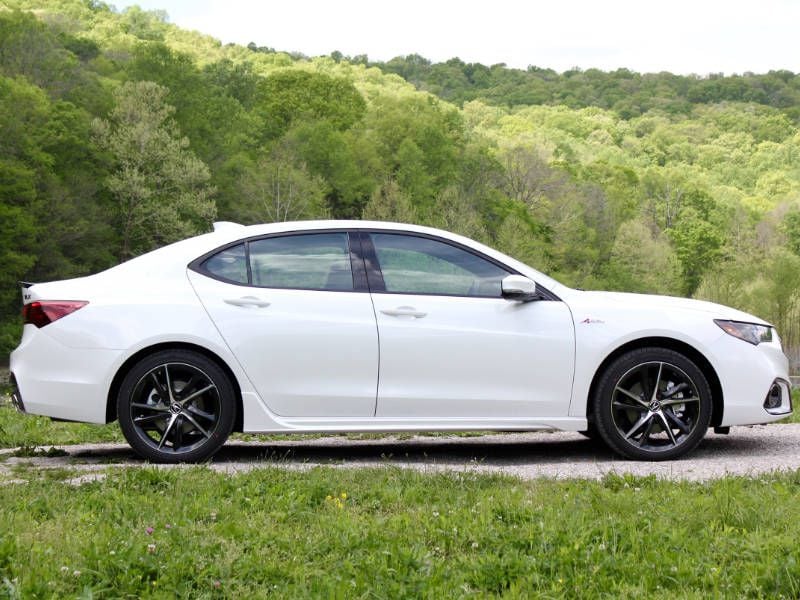
Photo by Miles Branman
Pricing and Packages
Acura’s TLX gets a $1,000 bump to its starting figure for 2018, putting the base 2.4-liter model at $33,000. In exchange for additional coin, buyers receive Apple CarPlay, Android Auto, AcuraWatch, and HD Radio. Other standard equipment includes dual-zone automatic climate control, push-button ignition, keyless entry, a power moonroof, power front seats, heated front seats, and a backup camera. Stepping up to the Tech trim will cost you $4,700 and adds blind spot monitoring, rear cross-traffic alert, navigation, a 10-speaker premium audio system, rain sensing wipers, and perforated leather seats. Front-wheel drive V6 TLX models now start at $36,200 (up $850 from last year). Adding the Technology package for $3,700 brings the same features as 4-cylinder cars, plus a power thigh extender for the driver’s seat. The A-Spec slots between the Tech and Advance versions with a starting figure of $42,800. Range-topping Advance models retail for $43,750 and include a surround-view camera, wireless phone charger, heated windshield, heated rear seats, a heated steering wheel, power folding side mirrors, LED fog lights, remote engine start, vented front seats, parking sensors, and auto-dimming side mirrors. All V6 models can add SH-AWD for $2,000.
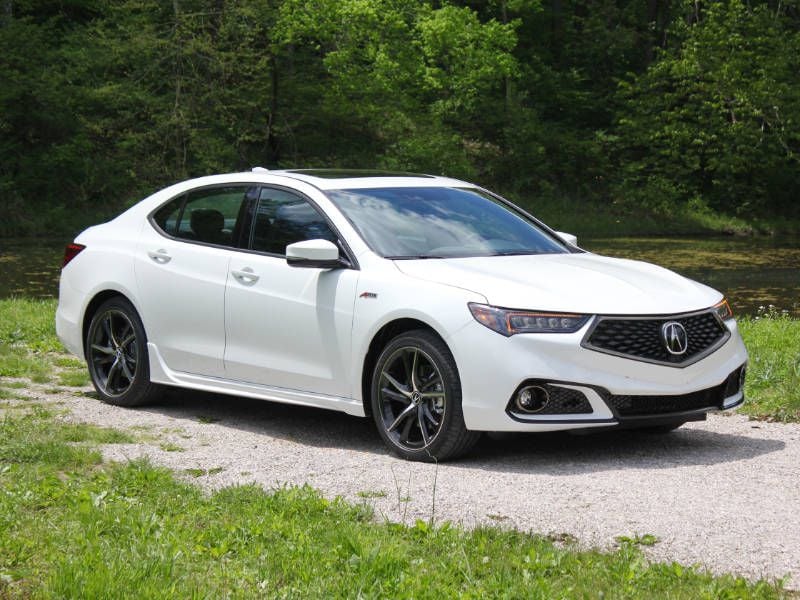
Photo by Miles Branman
Highs and Lows
Highs:
- Nimble handling
- Striking A-Spec design
- Class-leading value
- Comfortable cabin and ride quality
- Advanced safety tech comes standard
Lows:
- Outdated infotainment and TFT systems
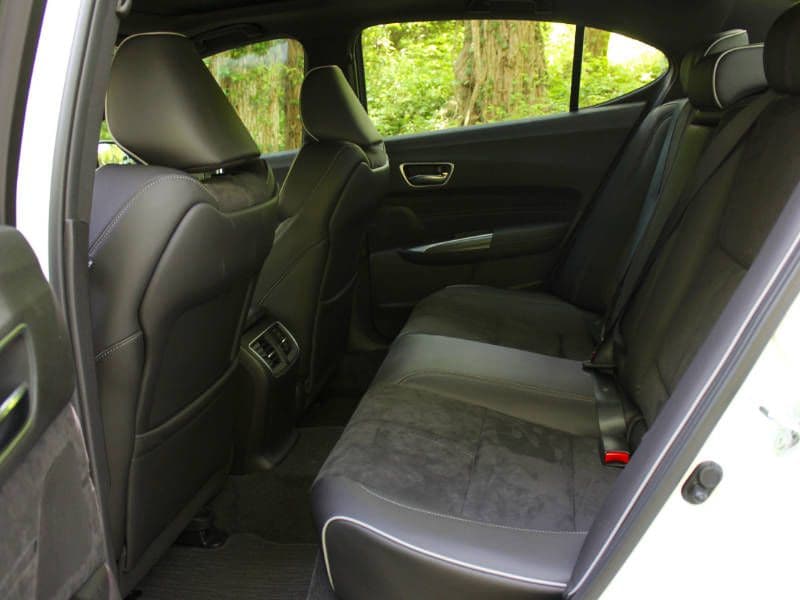
Photo by Miles Branman
Competition
Acura will tell you its TLX squares off against the BMW 330i, Mercedes-Benz C300, Audi A4, and Lexus IS in the luxury segment, but given the automaker’s recent case of amnesia, many consumers would sooner group the TLX with Infiniti’s Q50, Volvo’s S60, and BMW’s 320i. It’s not a question of whether the TLX is as quick, comfortable, and handsome as Germany’s trio (it is) – it’s a matter of brand perception. This reality can either be seen as a disadvantage or an opportunity. We’re of the opinion that Acura has a chance to distinguish itself from the tired luxury routine. Energetic marketing that doesn’t the concept of “premium” too seriously, a performance bent, and continued value for money will nurture the Acura brand to a better position than ever. Acura’s 2018 TLX V6 ($36,200) – the volume spec – makes more power, handles just as well, costs less, and includes more standard features than high-value luxury marques. If the TLX was a publically traded stock, it would be undervalued and poised for a surge.
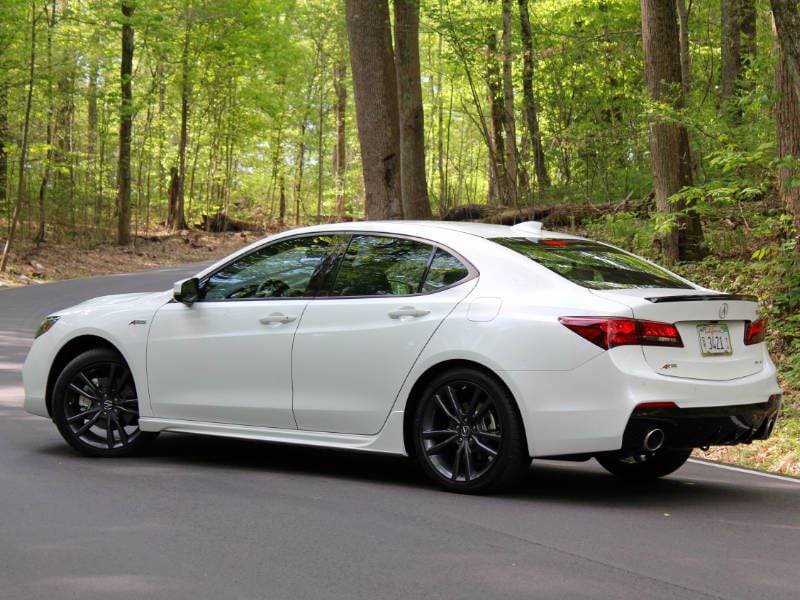
Photo by Miles Branman
Final Thoughts
Chanting its new mantra of “precision crafted performance,” Acura appears well on its way out of the woods. Fixing the 2018 Acura TLX’s nose and adding standard equipment wouldn’t be enough, but reviving A-Spec sends a clear message to consumers and segment rivals: Acura has found its mojo.
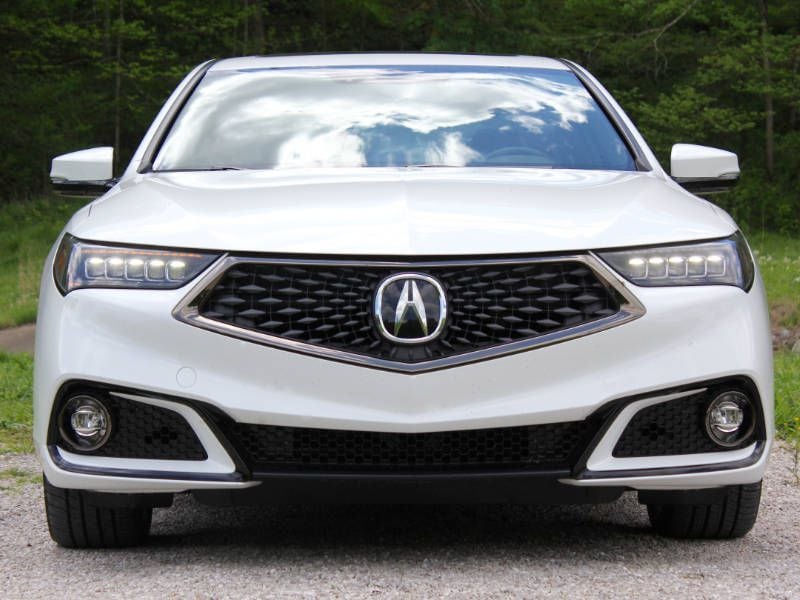
Photo by Miles Branman